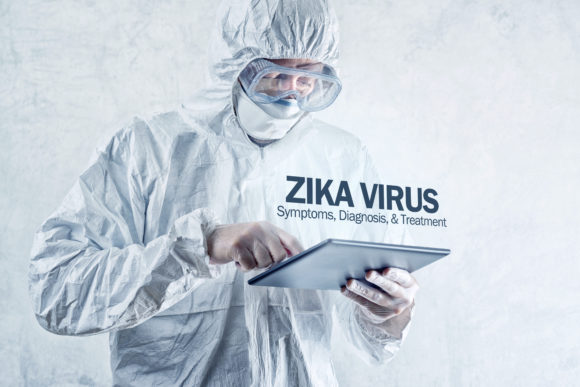The Pan American Health Organization first confirmed Zika virus infections in Brazil in May 2015. It took nine months for the World Health Organization (WHO) to declare an international public health emergency. It was then only a matter of days before the Centers for Disease Control and Prevention (CDC) elevated its response to Level 1, the highest activation at the agency.
As healthcare providers and public health officials closely monitor and report Zika cases, they hope to improve their understanding of the virus. It seems certain that Zika will continue to spread, and it will be difficult to determine how and where the virus will expand over time.
The Zika virus only recently emerged in the Americas, and it is difficult for insurance companies to assess the financial risks of an outbreak because of limited data. Thankfully, actuaries can look to epidemiological models of similar diseases – such as dengue fever – to better understand the potential spread and financial impact. For outbreaks of infectious diseases, these models are better at capturing variability and uncertainty than traditional statistical techniques.
What We Know about Zika
- The virus is spread mainly through the bite of a tropical mosquito called Aedes aegypti.
- The virus can also spread sexually and from a pregnant woman to her fetus during pregnancy or around the time of birth.
- According to the CDC as of June 22, 2016, no local mosquito-borne Zika virus disease cases have been reported in U.S., but there have been 820 travel-associated cases.
- Local transmission is occurring in U.S. territories in the Caribbean.
What Is Likely about Zika
- The virus seems to be spread through blood transfusions, but this is not confirmed.
- The incubation period – the time from exposure to symptoms – for Zika virus is not known, but is probably a few days to a week.
- The number of Zika cases among travelers visiting or returning to the United States will likely increase.
- Local-mosquito borne outbreaks of Zika virus may occur in the U.S. as soon as this summer, as mosquito populations rise in the warm and humid weather.
There is no vaccine for the Zika virus. Only recently did two drug makers receive approval from U.S. regulators to begin human trials to test a vaccine. Phase 1 results are expected later this year.
Anthony Fauci, director of the National Institute of Allergy and Infectious Diseases, has said that the world’s best hope against Zika is a vaccine. Until one is available, actuaries can only continue to respond to what we learn.
Modeling an Outbreak
There is no straightforward way for insurers to build statistical models on Zika. In instances like this, insurers look at historical records, starting with the CDC, WHO, epidemiological medical journals, and news sources that serve as aggregators of information.
This research gives insurers an understanding of the geographic locations of events or where a specific type of mosquito lives, to get a good sense of the start location, transmission rate distribution, and fatality or hospitalization ratios. Before they start to model the outbreak, insurers will also want to understand the correlation between those ratios.
There are two main options insurers have when it comes to modeling an outbreak: scenario testing (a.k.a. stress testing) and stochastic modeling. While scenario testing won’t give insurers the full picture, it is a relatively quick way to get an understanding of the financial effects of a pandemic. However, this approach doesn’t provide a probability of occurrence. It won’t tell an insurer, for instance, whether the chance of a severe event occurring is 2 percent or 10 percent.
Stochastic modeling is an ensemble of many scenarios, each derived from a set of random draws from a set of specific distributions. This allows the modeler to estimate the severity and likelihood of an event.
Stochastic epidemiological models have been used by many people in the epidemiological community. They combine our understanding of disease spread and virulence, and help assess the status of an outbreak, and where it may be in a few weeks. Organizations like WHO and CDC, and use them to plan how to deploy their resources to fight an outbreak to stop or limit the effect of the pathogen.
Insurers can use stochastic modeling to better gauge the severity of an event and determine how to limit the financial burden. These simulations can be applied to an insurer’s portfolio to determine a probabilistic financial loss.
Addressing Extreme Events
It is still a novel concept to implement these statistical techniques in insurance. Insurers are excellent at dealing with medical cost claims and the effect of mortalities. Life and health insurance companies deal with the effect of catastrophes on portfolios less commonly, because they are rare.
That’s where modeling companies – with their actuaries, epidemiologists, data scientists, and other subject-matter experts who are familiar with severe events and understand the variable interactions – can help insurers, financial institutions, and others calculate the risk. Insurers want that knowledge to help assess solvency, determine pricing and estimate reserve needs in the event of a severe outbreak.
Ask an epidemiologist if there is a potential for a pandemic and the answer is almost invariably yes. “There’s not just the potential. It’s going to happen. It’s just a matter of when. Therefore, we in the life and health space need to prepare before the event is upon us.”
Making Better Decisions
There is great interest in Zika among insurers. Primary insurers and reinsurers are trying to grasp the short- and long-term effects of the virus. One of the factors coming into play for life and health insurers is where their book of business is located. If the U.S. experiences local transmission of the Zika virus, insurers in the southern to mid-Atlantic states are most likely to experience the first wave of cases because the mosquito that carries Zika is most prevalent in that region.
By nature, insurers like to plan. Pandemics don’t always give us time to prepare. Insurers should learn to behave like epidemiologists and understand severe events, so they don’t feel the severe financial implications of them.
Topics Carriers USA Risk Management
Was this article valuable?
Here are more articles you may enjoy.



 Allstate Reports $731M in Q1 Pretax Catastrophe Losses
Allstate Reports $731M in Q1 Pretax Catastrophe Losses  Progressive Gains as Drivers Shop Around for Auto Insurance—Again
Progressive Gains as Drivers Shop Around for Auto Insurance—Again  JPMorgan Client Who Lost $50 Million Fortune Faces Court Setback
JPMorgan Client Who Lost $50 Million Fortune Faces Court Setback  Survey Shows Majority of Florida, California Homeowners Seeing Higher Insurance Costs
Survey Shows Majority of Florida, California Homeowners Seeing Higher Insurance Costs 



